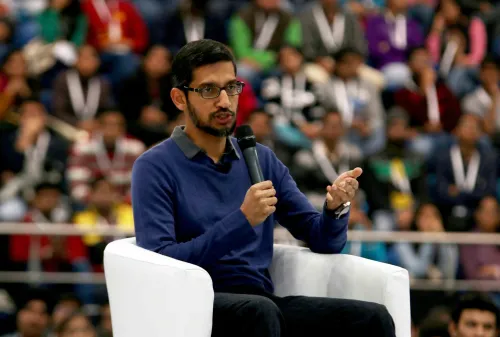Will 'Made in India' semiconductor chips hit the market by the end of 2025?

Synopsis
Key Takeaways
- PM Modi announced that Made-in-India chips will be available by 2025.
- This initiative signifies a step towards technological self-reliance.
- India aims to become a global hub for semiconductor manufacturing.
- Over 50% of real-time digital transactions occur through India's UPI system.
- Self-reliance is crucial for enhancing national security.
New Delhi, Aug 15 (NationPress) Prime Minister Narendra Modi, during his 79th Independence Day speech from the Red Fort, announced that semiconductor chips manufactured in India will be available to consumers by the end of 2025, representing a significant achievement in India’s quest for technological self-reliance.
Addressing the theme of Naya Bharat, PM Modi stressed the importance of technology in the 21st century and India's ambition to excel in vital sectors such as semiconductors, artificial intelligence, and clean energy.
“Decades ago, discussions about semiconductor factories began, yet progress was hindered by bureaucratic delays. Today, we are making substantial strides in semiconductor production,” he stated.
He highlighted that several nations are leading in this field, saying, “We have embarked on semiconductor production in mission mode. We are set to launch six units, with four of them nearing completion,” he remarked.
This proclamation is part of the government's extensive Semiconductor Mission, which aims to lessen reliance on imports and establish India as a global center for chip manufacturing. Modi connected this technological advancement to the vision of a Viksit Bharat by 2047, asserting that self-sufficiency in semiconductors will bolster various sectors, including defense and digital infrastructure.
“Our next significant goal is to achieve self-reliance in technology,” he added.
He posed a rhetorical question: “Could we have smoothly executed Operation Sindoor without being Atmanirbhar?”, linking India's military accomplishments to its enhanced local capabilities.
Furthermore, the Prime Minister underscored the impact of digital solutions in revolutionizing governance and connecting citizens with the government.
He pointed out that India accounts for over 50% of the world’s real-time digital transactions via the UPI system, highlighting the nation’s leadership in fintech innovation.
PM Modi’s address combined strategic vision with national pride, with semiconductor production presented as not merely an economic aim but as a representation of India’s rise as a technological leader.
“Self-reliance transcends trade; it encompasses our inherent capabilities,” he concluded.
As India celebrates its 79th Independence Day, the prospect of locally produced chips heralds a transformative era in its industrial and digital landscape, potentially reshaping its role in the global technology arena.









